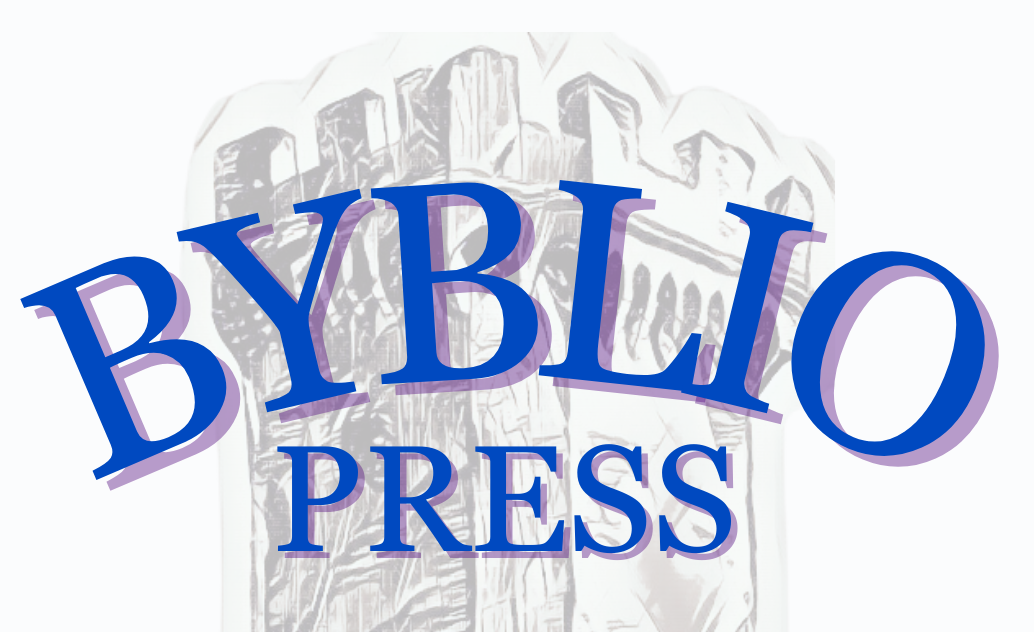
REGISTERING YOUR BOOK
technical & legal issues

Registering Your Book
The International Standard Book Number (ISBN) is a 13-digit number that uniquely identifies books and book-like products that are published internationally. Byblio Press registers its books to help suppliers and purchases identify and purchase books. The ISBN is intended for a single publication: text that stands on its own as a product, whether printed, electronic, or audio. (Recurring publications, such as magazines, receive a different kind of number.) Byblio Press obtains a unique ISBN for each version of a book it publishes. Any new or updated version of a book that has an ISBN requires a new ISBN. The ISBN includes a barcode and uniquely identifies your book and facilitates the sale of books (physical and digital) to bookstores and libraries. Other versions of the book can be published by Byblio or another publisher. The only limitation is that you cannot use the book files in their finished form to print the book exactly as it is with another publisher. Each version needs its own ISBN number.
A Library of Congress Control Number (LCCN) is a record identifier assigned by the Library of Congress to bibliographic and authority records. These unique identifiers are assigned to records created when materials arrive at the library. The Library of Congress sets strict guidelines about which books may receive a LCCN. The following types of books are not eligible to receive a LCCN:
- Books which do not list a U.S. city as place of publication on the title page or copyright page
- E-Books (i.e. books published in electronic format)
- Serials
- Custom editions
- Items under 50 pages with the exception of genealogies and children's literature and catalog exhibitions submitted by museums and art galleries
- Textbooks below the college level
- Items not intended for wide distribution to libraries
- Religious instructional materials
- Expendable educational materials
- Transitory or consumable materials, such as coloring books, comic books, and cut-out books.
- Translations except Spanish
- Music scores
- Crossword puzzle books
US Copyright Protection for an author’s work occurs immediately and automatically when you establish a work in a tangible form. The tangible form might be a printed manuscript, but computer files and a computer hard drive are also considered tangible forms. When Byblio Press creates a book, we register it with the U.S. Copyright Office, which creates a public record of the book’s basic information, and the book becomes copyrighted.
Some authors may want to create a trademark to provide additional protection of some aspect of their book, such as a unique title or new brand, beyond the copyright protection.
Creating a trademark is a relatively easy process which does not require the help of an attorney. It allows the letters TM to be associated with what is protected and helps deter unlawful use of what is protected. The additional step of having the trademark “registered” to provide more protection is usually not needed and usually requires the help of an attorney.

CONTENT STANDARDS
To avoid legal questions about copyright infringement, libel, and privacy matters, Byblio Press has established content standards that must be followed. All books are evaluated and subject to these standards.

COPYRIGHTS
To avoid copyright infringement when citing the work of another party in your book, follow the following practices:
- At least 75 percent of a book’s content must be original and created by the author.
- Quoted poetry and song lyric content cannot be more than eight lines.
- Quoted article content can be no more than three sentences or 10 percent of the article.
- Quoted book content can be no more than 500 words.
In most cases, any picture, material, text, information, quote, map, song or illustration that you personally did not create is U.S. Copyright protected by the person who created/published the material. Any text or pictures found in a book, magazine or newspaper is U.S. Copyright protected by the publisher, artist, photographer or another individual. Most information found on the Internet is U.S. Copyright protected.
Citing the source of material does not protect an author from U.S. Copyright infringement. Authors must obtain and keep written permission from the U.S. Copyright holder. In order to not be held liable in a lawsuit, request permission to use the work by contacting the original U.S. Copyright holder and explain what work you wish to use and for what purpose. Obtain written permission from the copyright holder to use the material in the book and note it on the credits page of the manuscript.

LIBEL & PRIVACY
To avoid libel and protect the privacy of living people mentioned in your book:
- Change or remove the author’s name and/or the names of people referenced in the manuscript or materials.
- Change or remove the names of locations, businesses, organizations, educational establishments, etc. where the events in the manuscript and/or materials take place.
- Remove images (including front and back cover images) that reveal the identification of people or locations referenced in the manuscript and/or materials.
Interested in our services?
We’re here to help!
We want to know your exact needs so that we can provide the perfect solution. Let us know what you want and we’ll do our best to help.

Inspire, Inform, and Transform


Inspire, Inform, and Transform

All Rights Reserved Byblio Press
All Rights Reserved Byblio Press